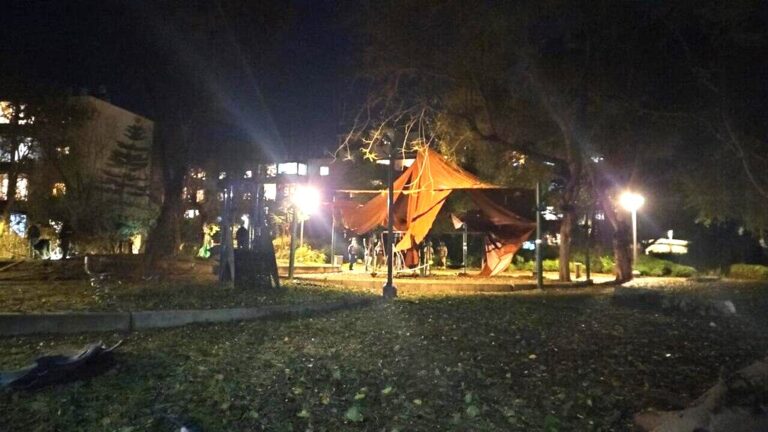The short-wavelength blue light, emitted by the screens we watch, damages the duration, and even more so, the quality of our sleep. This is the conclusion of a new study undertaken by the University of Haifa and Assuta Sleep Clinic. The study also found that watching screens that emit red light does not cause damage, and sleep after exposure to it was similar to normal sleep. “The light emitted by most screens – computers, smartphones, and tablets – is blue light that damages the body’s cycles and our sleep,” explains Prof. Abraham Haim from the University of Haifa, one of the authors of the study. “The solution must be the use of the existing filters that prevent the emission of this light.”
Previous studies have already shown that watching screens before going to sleep damages our sleep. It has also been found that exposure to blue light with wave lengths of 450-500 nanometers suppresses the production of melatonin, a hormone secreted at night that is connected with normal body cycles and sleep. The new study, published in the journal Chronobiology International, was undertaken by researchers Prof. Abraham Haim, head of the Israeli center for interdisciplinary research in chronobiology at the University of Haifa; doctorate student Amit Shai Green of the Center for Interdisciplinary Chronobiological Research at the University of Haifa and the Sleep and Fatigue Center at Assuta Medical Center; Dr. Merav Cohen-Zion of the School of Behavioral Sciences at the Academic College of Tel Aviv-Yafo; and Prof. Yaron Dagan of the Research Institute for Applied Chronobiology at Tel Hai Academic College. The researchers sought to examine whether there is any difference in sleep patterns following exposure to blue screen light as compared to red light prior to sleep, and furthermore, to find which is more disruptive: wavelength or intensity?
The study participants were 19 healthy subjects aged 20-29 who were not aware of the purpose of the study. In the first part of the trial, the participants wore an actigraph for one week (an actigraph is a device that provides an objective measurement of the time when an individual falls asleep and wakes up). They also completed a sleep diary and a questionnaire about their sleeping habits and quality of sleep. In the second part of the trial, which took place at Assuta’s Sleep Laboratory, the participants were exposed to computer screens from 9PM to 11PM – the hours when the pineal gland begins to produce and excrete melatonin.
The participants were exposed to four types of light: high-intensity blue light, low-intensity blue light, high-intensity red light, and low-intensity red light. Following exposure to light, they were connected to instruments that measure brain waves and can determine the stages of sleep a person undergoes during the course of the night, including awakenings not noticed by the participants themselves. In the morning, the participants completed various questionnaires relating to their feelings.
On average, exposure to blue light reduced the duration of sleep by approximately 16 minutes. In addition, exposure to blue light significantly reduced the production of melatonin, whereas exposure to red light showed a very similar level of melatonin production to the normal situation. The researchers explain that the impaired production of melatonin reflects substantial disruption of the natural mechanisms and the body’s biological clock. Thus, for example, it was found that exposure to blue light prevents the body from activating the natural mechanism that reduces body temperature. “Naturally, when the body moves into sleep it begins to reduce its temperature, reaching the lowest point at around 4:00AM. When the body returns to its normal temperature, we wake up,” Prof. Haim explains. “After exposure to red light, the body continued to behave naturally, but exposure to blue light led the body to maintain its normal temperature throughout the night – further evidence of damage to our natural biological clock.”
The most significant finding in terms of the disruption of sleep was that exposure to blue light drastically disrupts the continuity of sleep. Whereas after exposure to red light (at both intensities) people woke up an average of 4.5 times (unnoticed awakenings), following exposure to weak blue light 6.7 awakenings were recorded, rising to as many as 7.6 awakenings following exposure to strong blue light. Accordingly, it is hardly surprising that the participants reported in the questionnaires that the felt more tired and in a worse mood after exposure to blue light.
“Exposure to screens during the day in general, and at night in particular, is an integral part of our technologically advanced world and will only become more intense in the future. However, our study shows that it is not the screens themselves that damage our biological clock, and therefore our sleep, but the short-wave blue light that they emit. Fortunately, various applications are available that filter the problematic blue light on the spectrum and replace it with weak red light, thereby reducing the damage to the suppression of melatonin,” concludes Prof. Haim.
(YWN – Israel Desk, Jerusalem)











